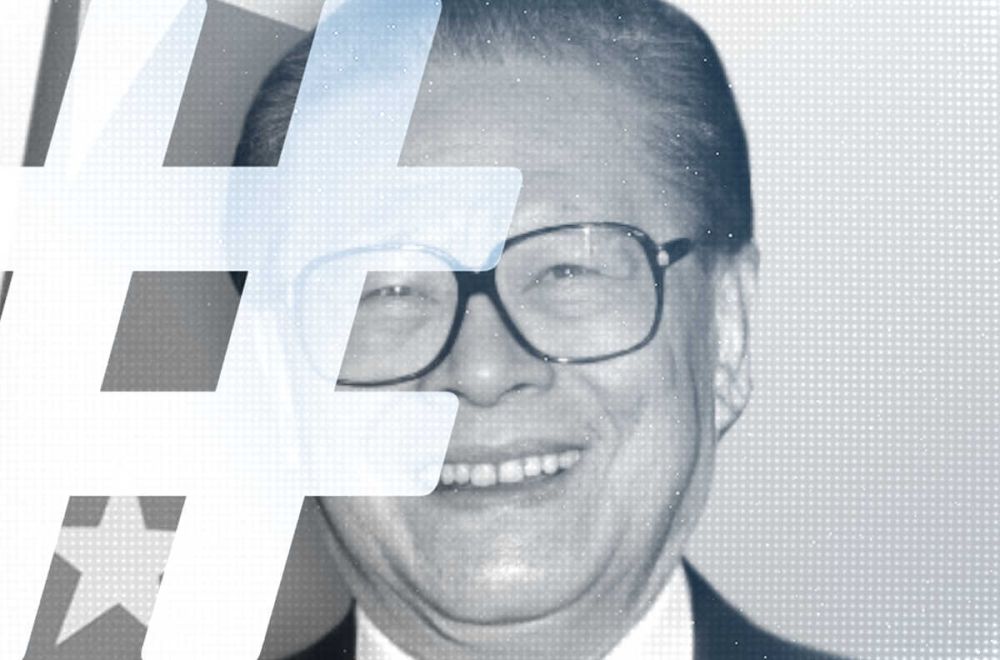
Image by Roman Kubanskiy available at Wikimedia Commons under CC license.
As the news came this afternoon of the death of China’s former top leader Jiang Zemin (江泽民) at the age of 96, the treatment of the story in the country’s online media was a study in color contrasts.
Jiang’s death was reported after 4 PM in the form of a pair of official Xinhua News Agency items — the first a letter of notice to the country, the second the “committee list” for Jiang’s funeral arrangements. After announcing Jiang’s passing to the Party, the military, and the country, the first release listed the former leader’s honorifics:
Comrade Jiang Zemin was an outstanding leader who had the utmost respect of our Party, our military, and the various peoples of our nation; a great Marxist, a great proletarian revolutionary, politician, military expert, and diplomat; a tried and tested communist fighter, an outstanding leader of the great cause of socialism with Chinese characteristics; the core of the third generation of the Party’s collective leadership; and the main founder of the important thought of the ‘Three Represents.’
The honorifics bestowed on CCP leaders after their death are not an incidental matter. They are considered carefully in the light of history and internal Party politics. For more on this issue, readers can turn to David Bandurski’s 2017 article, “The Politics of Passing On.”
The phrase “great proletarian revolutionary” used here, for example, is far more elevated that the usual “outstanding proletarian revolutionary” — putting Jiang, not so surprisingly, in the company of a short-list of greats including Deng Xiaoping, Ye Jianying, Chen Yun, Yang Shangkun, and Hu Yaobang.
As this pair of Xinhua releases went out through CCP media across the country, those directly under the leadership of Party committees and propaganda departments, site designs went black.
At People’s Daily Online, the letter of notice was carried across the top of the image slider. The website’s banner remained a link to a collection of “important speeches” from Xi Jinping, but the backdrop, usually bright CCP red, was drained of its color. All images and advertisements across the site’s homepage, including the digital version of today’s edition of the People’s Daily print edition, were black or chalky grey.

The text immediately under the main headline read, simply:
Our beloved Comrade Jiang Zemin, suffering from leukemia combined with multiple organ failure, could not be resuscitated and passed away in Shanghai at 12:13 PM on November 30, 2022, at the age of 96.
The lower sections of the website, all the way down to the footer, were darkened to black, including advertisements for Dell Technologies and other companies.
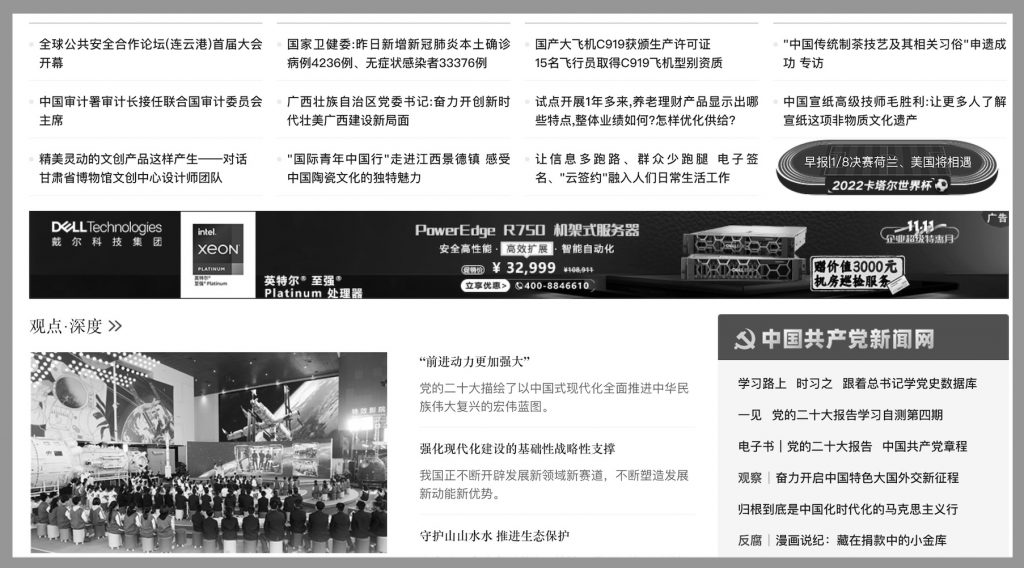
The treatment at the website of the Global Times, a sister publication of the People’s Daily, was nearly identical. The same headlines for the same Xinhua releases. And propaganda feature buttons for campaigns such as studying the “spirit” of the 20th National Congress of the CCP were again all in black.
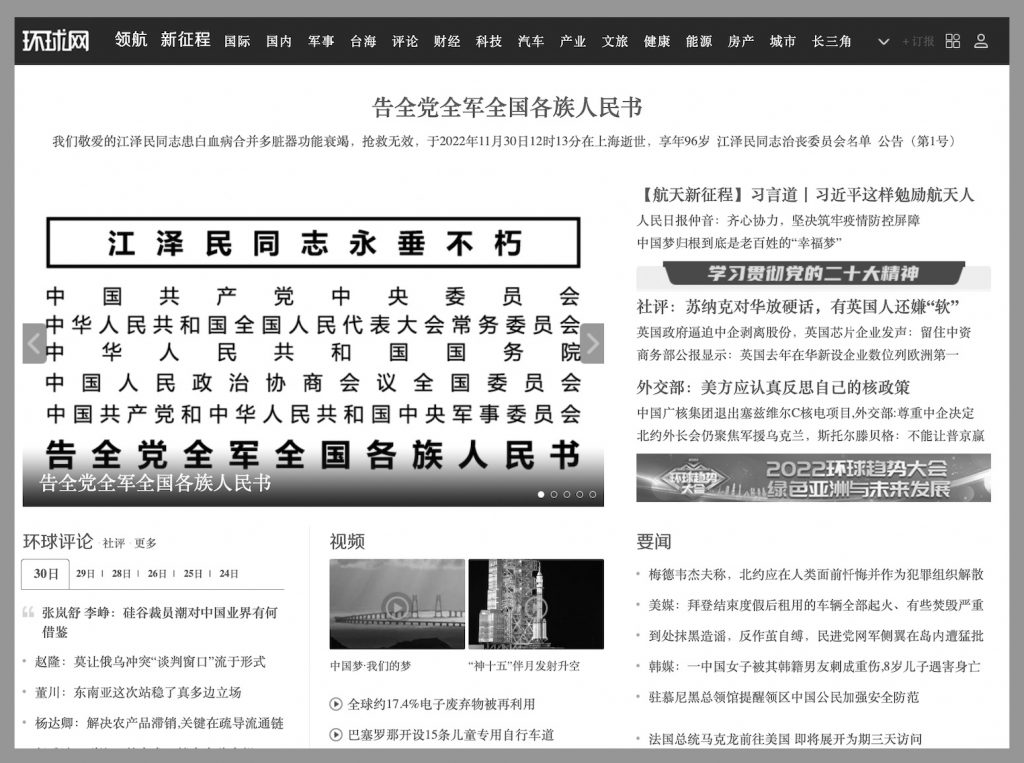
China Youth Online, the website of China Youth Daily, a newspaper under the Chinese Communist Youth League, also flipped the switch this afternoon.
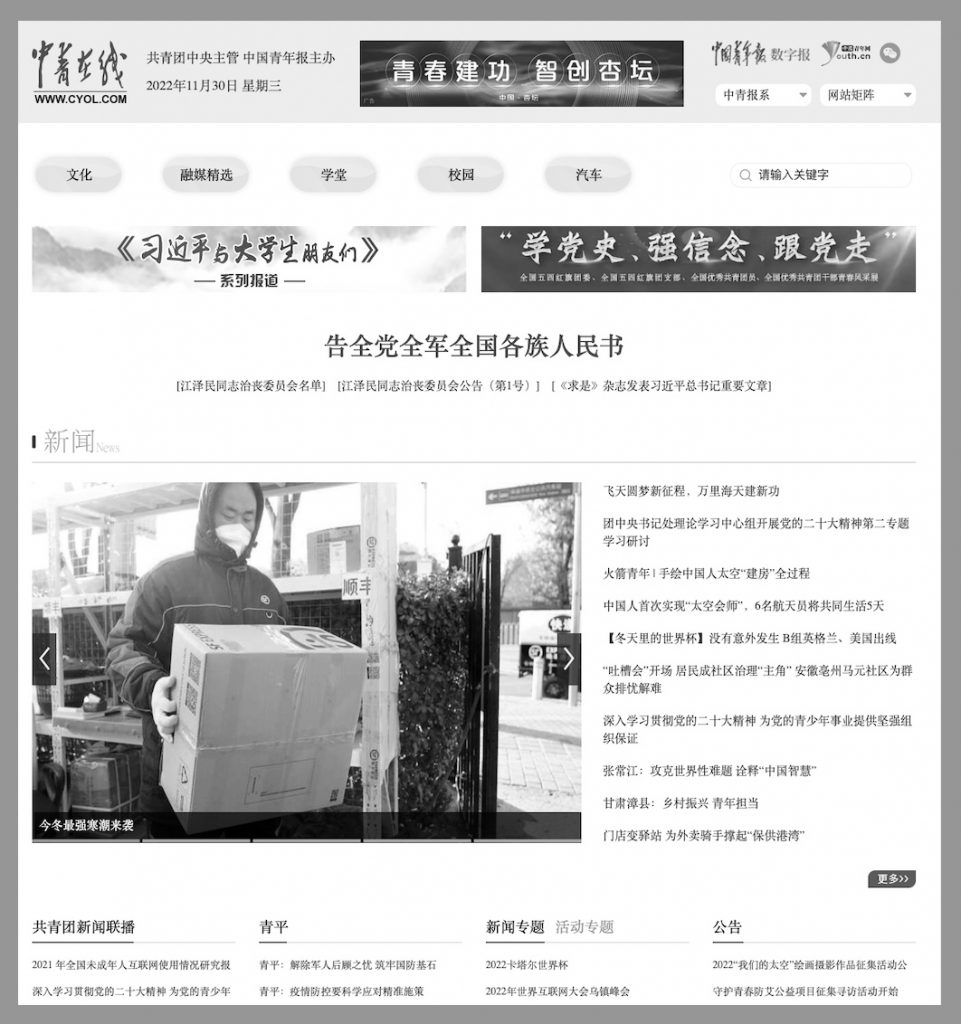
And here is the same treatment at Tianshan Online (ts.cn), the official website of the Xinjiang region, under the control of its propaganda department.

At Chongqing News Online, a site under the control of the propaganda department of the Chongqing Municipal CCP Committee and its official Chongqing Daily newspaper, the flipping of the switch, sending the site into black and white, created more than the usual visual confusion. The propaganda banners generally populating the top of the site were all there — about Xi Jinping’s inspirational ideas and new paths of struggle in the “New Era.”
But in black and white, they formed a thick and unbroken layer of rhetorical stratigraphy separating visitors from the news down below: “Letter of Notice of the Whole Party, the Whole Army, and the People of the Nation / Funeral Committee List for Comrade Jiang Zemin.”

But while all media and websites were likely under explicit instructions to run the official Xinhua notices about Jiang’s death, more commercially-minded outlets and private internet portals were apparently not under orders to go black, and they took hybrid approaches.
The Beijing News, for example, the paper’s logo on the site banner maintained its characteristic deep red, and a propaganda banner further down announced in deep red the publication of a recent speech by Xi Jinping in the official CCP journal Seeking Truth. Links to the newspaper’s WeChat and Weibo accounts were also in full color.
Only then came the Xinhua announcement of Jiang Zemin’s death, along with black-and-white news items of the releases on the officials set to prepare and attend the former leader’s funeral.
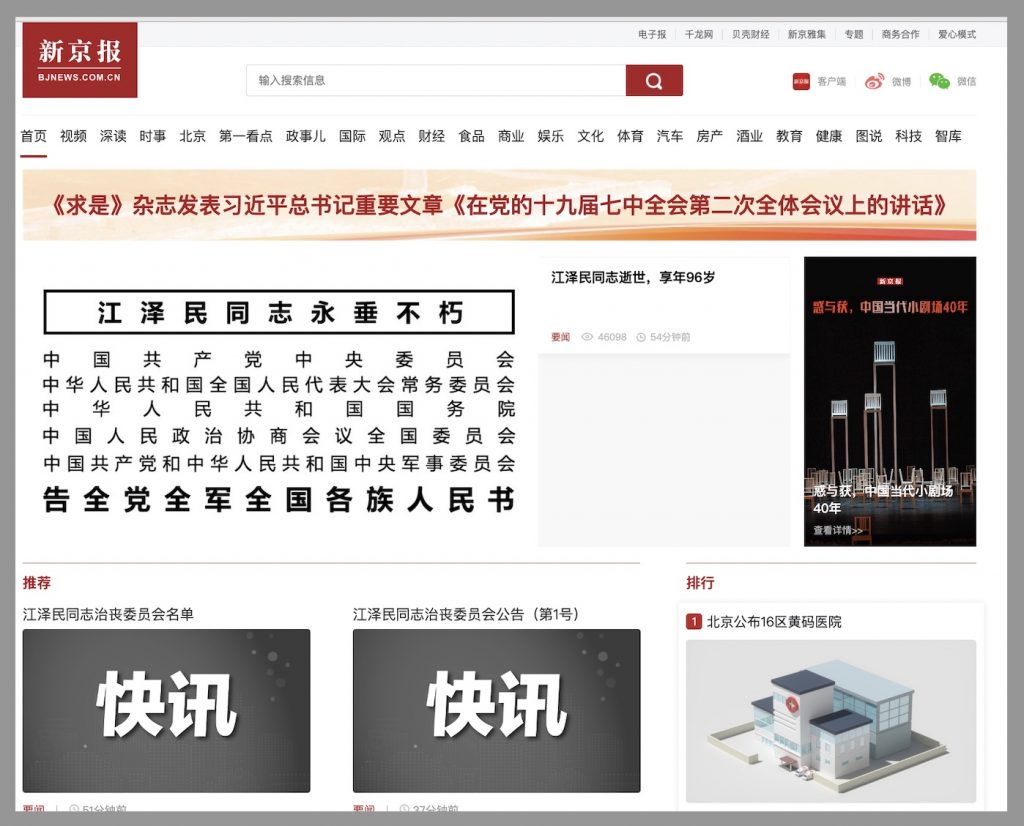
A newspaper with a deep tradition of professionalism from its founding in 2003, at the dawn of the Hu Jintao era, The Beijing News was brought under the management of the Beijing municipal propaganda department in September 2011, a clear attempt to bring it to heel.
The Paper, an online portal launched in July 2014 under the state-run Shanghai United Media Group, remained full color this afternoon, choosing to include the official releases about Jiang’s death and the list of funeral attendees along with other propaganda items, including the same Xi Jinping speech printed in Seeking Truth.

There was no effort in The Paper to accentuate the news about Jiang’s death and featured images and advertisements remained in color.
At private internet sites too, like Sina and Phoenix Online, the color remained.
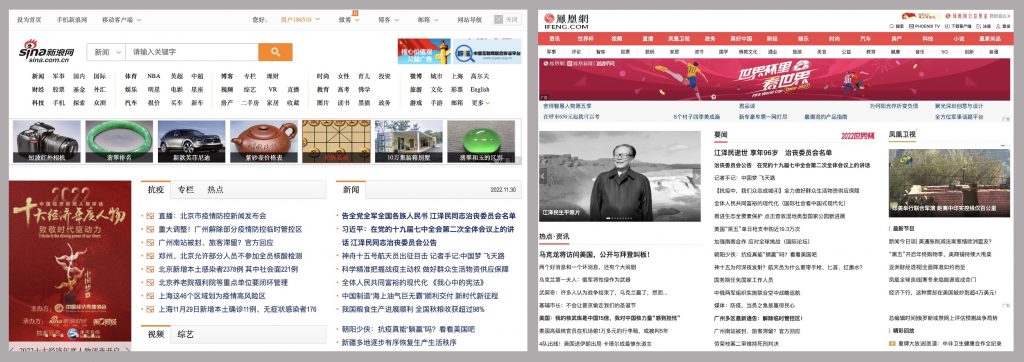
A Sina Weibo, where full color remained except for individual posts from Party-run media, the pair of Xinhua News Agency releases topped the list of most popular posts, listed as “exploding.” Slipping under these trending stories were several other hashtags about how Covid measures were being “optimized and refined.”




















